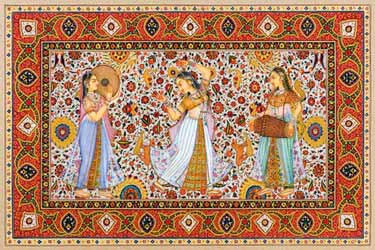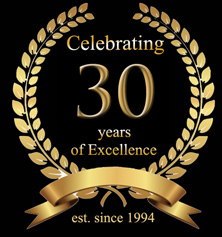PRIVATE INDIA, NEPAL & BHUTAN TOURS & LUXURY VACATIONS
Cultural Journeys. Trekking Expeditions. Luxury Holidays.
- Vacation Packages
- At a Glance
- Where to Stay
- Blogs & Travel Info
Private India, Nepal & Bhutan Tours & Luxury Vacations
Discover South Asia and the Himalayas in style on one of our culturally-inspiring tour packages to India, Bhutan & Nepal. Each tour is comprised of a myriad of uncommon adventures, luxury accommodations and immersive cultural experiences to help make the most out of your long waited Vacation. And since all of our Nepal, India & Bhutan tours are private, any of our itineraries can be modified suit your travel interests & requirements.
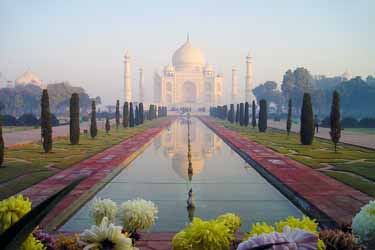
India Spectacular
A Private Luxury India Tour of History, Wildlife & Architecture – Delhi, Varanasi, Agra, Ranthambhore, Jaipur, Mumbai (13 days / 12 nights) From: $5,275
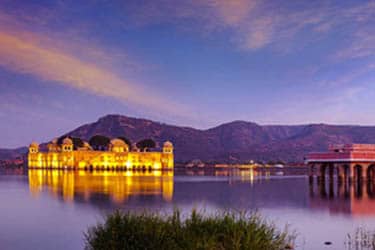
Mystical Gems of India
A Luxury India Tour of Cave Temples, Tigers, Palaces & Lakes – Mumbai, Aurangabad, Udaipur, Jaipur, Agra, Delhi (16 days / 15 nights) From: $6,595
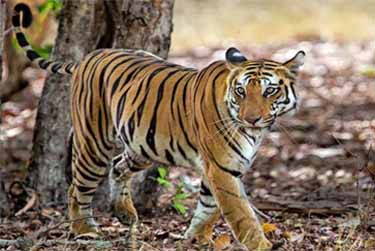
Undiscovered India
A Luxury India Tour of River Cruising & Wildlife Safari – Golden Triangle, Brahmaputra River, Nameri, Kaziranga, Mumbai (15 days / 14 nights) From: Please Call
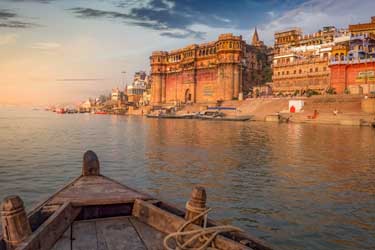
Majestic India
A Private Luxury India Tour of Palaces, Temples & Spirituality – Delhi, Agra, Jaipur, Varanasi, River Ganges (8 days / 7 nights) From: $2,825
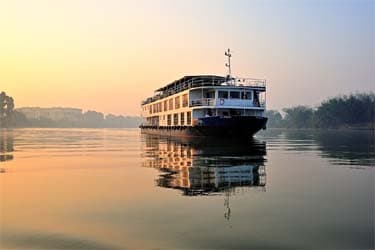
Enchanting India & River Ganges
A Luxury India Tour & River Cruise – Delhi, Agra, Jaipur, Kolkata, Historic Hooghly River Cruise, Varanasi (17 days / 16 nights) From: Please Call
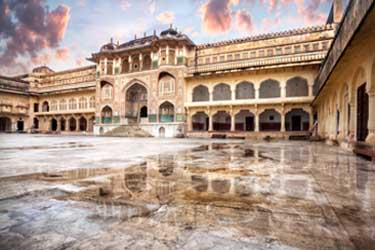
India Highlights
A Private India Tour of India’s Golden Triangle – Delhi, Agra, Jaipur (6 days / 5 nights) From: $1,845
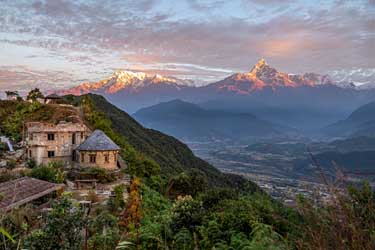
India & Nepal Highlights
A Private India & Nepal Tour – Delhi, Jaipur, Agra, Varanasi, Kathmandu (11 days / 10 nights) From: $3,975
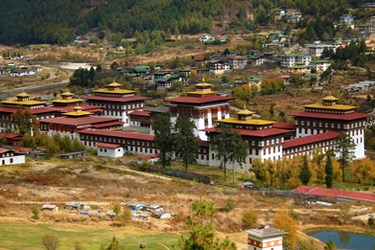
Splendid Bhutan
Private Luxury Bhutan Tour Package – Thimpu, Punakha, Paro (7 days / 6 nights) From: $3,475
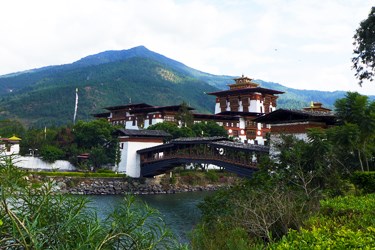
Paro & Thimpu
An Inspiring Bhutan Vacation Package – Paro, Thimpu, Tiger’s Nest Trek From: $2,285
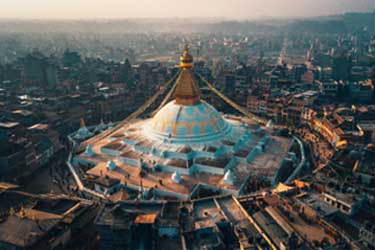
Kathmandu
A Private Nepal Tour – Kathmandu (4 days / 3 nights) From: $975
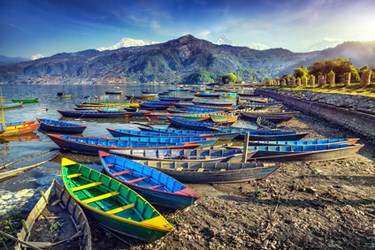
Scenic Pokhara Discovery
A Nepal Active Adventure Tour – Pokhara Valley From: $995
INDIA, NEPAL & BHUTAN OVERVIEW
For those seeking the road less traveled, South Asia rewards the traveler with unique, sometimes life-changing experiences. Each with its inspiring history, timeless traditions and over-the-top architectural marvels, a trip to India, Nepal or Bhutan marvels even the most seasoned traveler.
Whether your dream is to walk the grounds of India’s magnificent Taj Mahal, embark on an adventurous trek in Nepal’s Himalaya mountain range, or climb Bhutan’s sacred Tiger’s Nest hilltop temple, let Explorient make that adventure of a lifetime a reality.
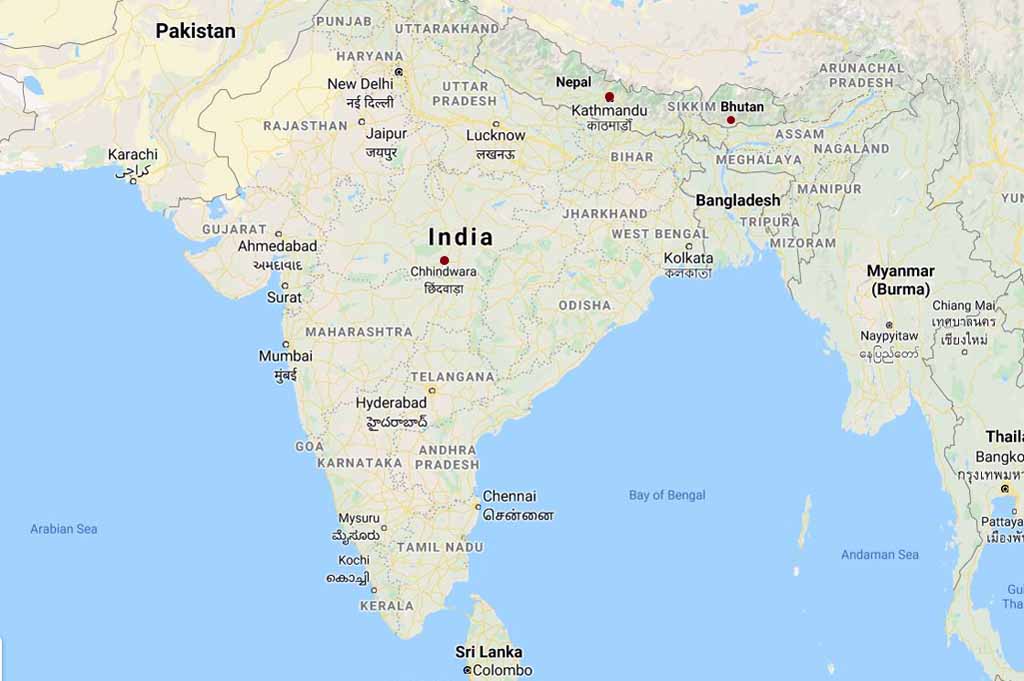
Our Top Picks – Bhutan, Nepal & India Tours

India Spectacular
A Private Luxury India Tour of History, Wildlife & Architecture – Delhi, Varanasi, Agra, Ranthambhore, Jaipur, Mumbai (13 days / 12 nights) From: $5,025
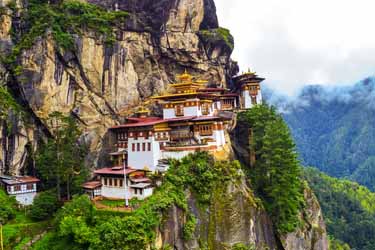
Spendid Bhutan
A Private Luxury Bhutan Tour – Thimpu, Punakha, Paro (7 days / 6 nights) From: $3,475

Enchanting India & River Ganges
A Luxury India Tour & River Cruise – Delhi, Agra, Jaipur, Kolkata, Historic Hooghly River Cruise, Varanasi (17 days / 16 nights) From: $5,825
INDIA – bounded by the majestic Himalayan ranges in the north and edged by a spectacular coastline surrounded by three seas, India is a vivid kaleidoscope of landscapes, magnificent historical sites and royal cities, golden beaches, misty mountain retreats, colorful people, rich cultures and festivities. From the old to the new, modern skyscrapers to centuries-old monuments, timeless culture to exotic wildlife, India never ceases to impress. Choose from one of our luxury India tours and be ready to elevate your senses.
Recommended Tours
NEPAL, a country of amazing extremes, is the home of the world’s highest mountains, historic cities and the forested plains where the lordly tigers and the great one-horned rhinoceros trundle at ease. In fact, enchantment is everywhere. Draped along the greatest heights of the Himalayas, Nepal is a land of sublime scenery, time-worn temples and warm friendly faces. It’s the kind of country that lingers in your dreams long after you leave it. Nepal is a heaven for the active traveler, with its stunning mountain ranges home to the awesome Mount Everest. For the rest of us not on a quest to conquer Earth’s pinnacle, our luxury Nepal tours offer awe-inspiring travel experiences to immerse in the Nepalese local culture amid some of the most picturesque landscapes on the planet.
BHUTAN, nestling in the heart of the great Himalaya, has for centuries remained aloof from the rest of the world. As one of the Earth’s last frontiers, Bhutan’s pristine natural setting, with high rugged mountains and deep valleys, boasts ecosystems that are both rich and diverse. Despite being one of the smallest countries in the world, Bhutan cultural diversity, deep rooted heritage and magnificent architectures are profound. From Paro’s awe-inspiring Tiger’s Nest to Thimpu’s stunning Tashichho Dzong to Punakha’s rural villages and local markets, our private Bhutan tours boast a once-in-a-lifetime travel experience you will never forget.
Recommended Tours
OUR HOTELS
As a leader in Asia travel for over two decades, we understand hotels are an integral part of any vacation. While soaking up South Asia’s dazzling sights and sounds, Explorient guests are always rest assured they will end the day in comfort and style. Accommodations featured on our India, Nepal & Bhutan tour packages are unique as the countries themselves. Our choice of hotels range from 4-star city hotels to opulent heritage palaces, and everything in between – making that amazing India, Bhutan or Nepal vacation the trip to remember. As many of our vacation packages offer a choice of accommodations to suit your travel style and budget, no matter your choice, you can be sure your “home away from home” will be a unique and welcoming experience.
INDIA HOTELS
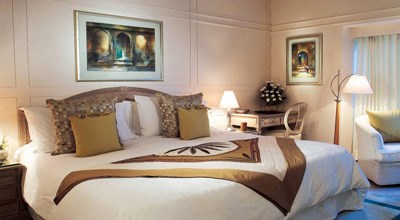
Delhi – The Claridges
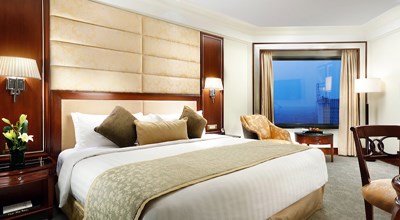
Delhi – Shangri-La Eros
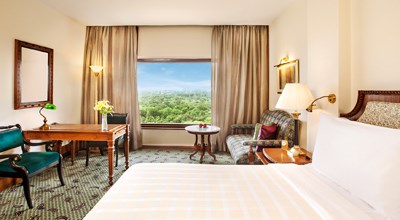
The Oberoi Hotel New Delhi
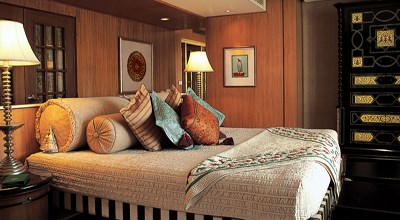
Agra – Oberoi Amarvillas
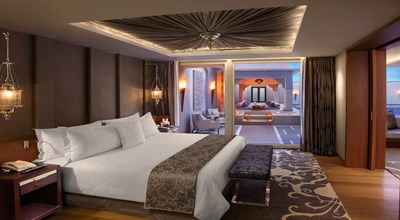
Agra – ITC Mughal Hotel
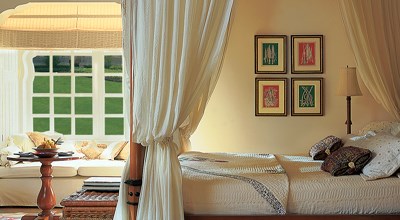
Jaipur – Oberoi Rajvillas
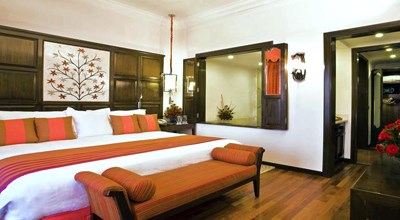
Jaipur – ITC Rajputana
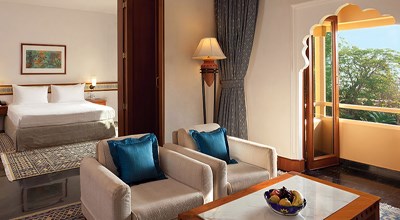
Jaipur – Trident Hotel
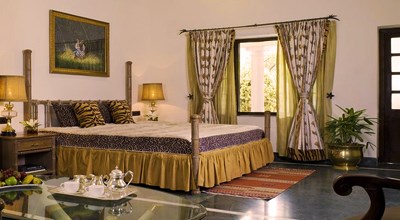
Rathambore – Taj Sawai Lodge
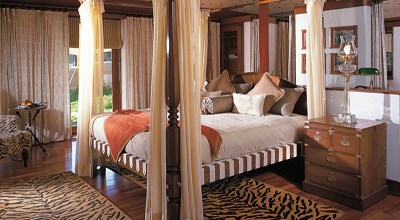
Ranthambhore – Oberoi Vanjavillas
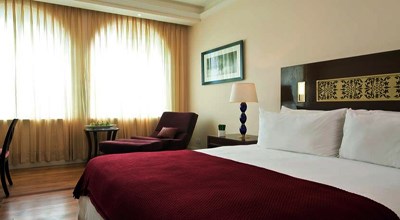
Varasani – Jaj Gateway Hotel
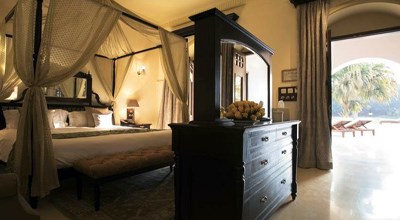
Varasani – Taj Nedesa Hotel
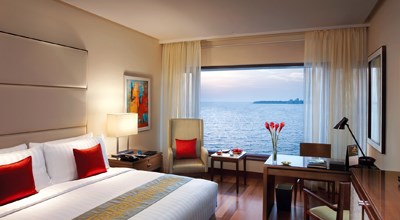
Mumbai – Oberoi Hotel
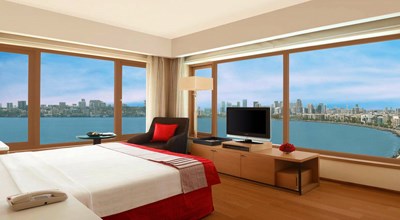
Mumbai – Trident Nariman Point
NEPAL HOTELS
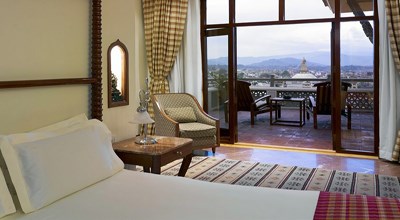
Kathmandu – Hyatt Regency Hotel
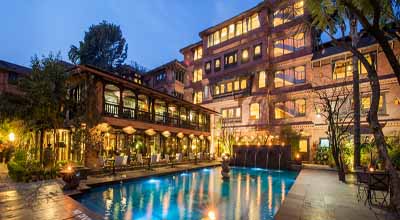
Kathmandu – THE Dwarika’s
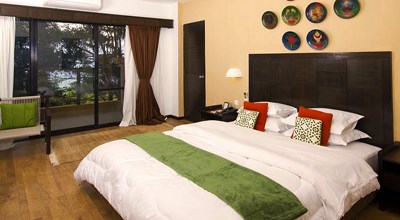
Nargarkot – Club Himalayas
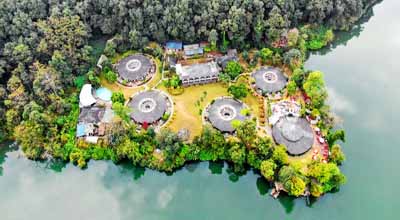
Pokhara – Fish Tail Lodge
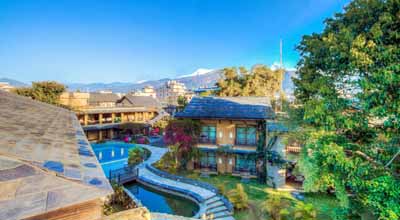
Pokhara – Temple Tree Resort
BHUTAN HOTELS
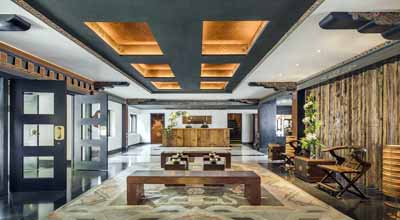
Uma Paro Hotel
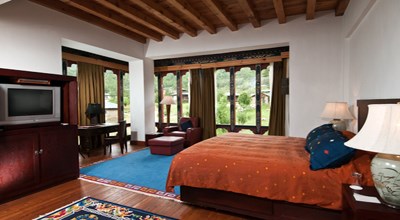
Paro – ZhiwaLing Hotel
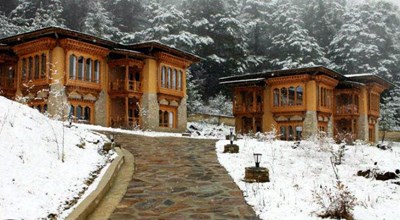
Paro – Naksel Boutique Hotel
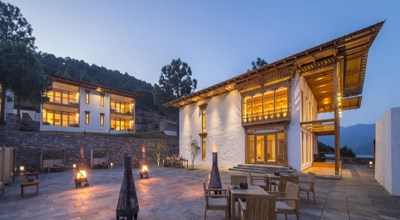
Punakha – Dhensa Boutique Hotel
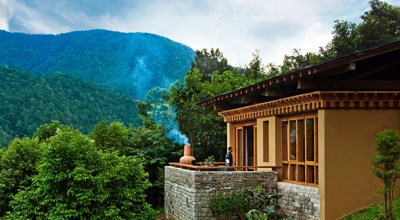
Uma Punakha Hotel
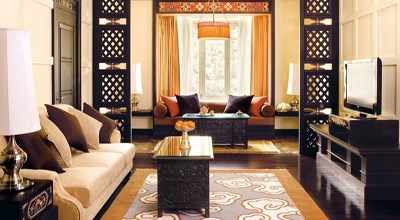
Thimpu – Taj Tashi Hotel
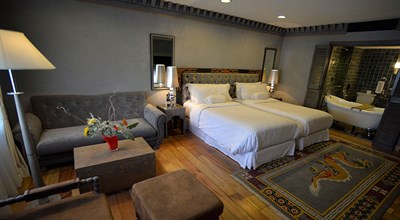
Druk Hotel Thimpu
Time Zone
11:30 + ET
Climate
View Chart
International Gateways
Delhi (DEL) / Mumbai (BOM)
INDIA VIRTUAL TOUR
INDIA GALLERY
DISCOVER MORE ON OUR INDIA TRAVEL BLOGS
PRACTICAL TIPS
- Passport & Visa
- Holidays
- Airport Taxes
- Baggage
- Climate & Clothing
- Communications
- Currency
- Customs Regulations
- Electricity
- Food & Water
- Health Matters
- Tipping
- Transportation
- What to Pack
Visas are required for US Citizens and most foreign nationals for entry to India. As of 2016, travelers can apply for their India visas online, making the process convenient and cost-effective.
For details on obtaining a visa for India, please visit the India Bureau of Immigration Website.
Republic Day – Jan 26th
Idu’z Zuha/Bakrid (Feast of the Sacrifice) – January/ February
Muharram (Islamic New Year) – February
Holi – March
Sri Rama Navami (Birthday of Sri Rama) – March
Mahavir Jayanthi – March/ April
Good Friday – April
Milad-Un-Nabi (Birth of the Prophet) – May
Buddha Purnima – May 4th
Independence Day – Aug 15th
Mahatma Gandhi’s Birthday – October
Vijaya Dasami/Dussera – October
Diwali – November
Eid al-Fitr (End of Ramadan) – November (3 days)
Christmas Day – Dec 25th
Airport departure taxes are included as part of your domestic and international flight tickets.
On Domestic flights, passengers are allowed 20kg (44 pounds of luggage per person) in economy class for most carriers. Low fare carriers will charge a fee for checked baggage. The cost varies depending on the city pair and method of purchase (prepaid vs at check-in). When booking these flights on your own, be sure to pre-purchase this service before arriving at the airport as they will be much more expensive at check-in. If you’re booked on one of our India tours, checked baggage service of up to 20kg is always included.
November-March is the best time to visit India. During this period, temperatures range from 40-60 F/5-15 C in the north to 65-85 F/19-30 C in the south. March-June is dry and exceedingly hot (85-110 F/30-44 C), and June-October is monsoon time (20-80 in/50-200 cm of rain will fall in one season). During the rainy period, the monsoon washes away many roads in game parks and rural areas. During the winter, Kashmir (30-45 F/0-7 C) and Ladakh are one of the coldest inhabited regions on Earth.
International Direct Dialing (IDD) service is provided at all hotels featured on our India tours. GSM and CDMA mobile phones are widely used in India, whereas SIM card is rarely sold for public. You may also check with your mobile service provider if an international plan may be available.
Internet Access will be available at all hotels included in your India vacation package, though fees may apply. Internet kiosks are available everywhere, and the charge is very low. However, wifi hotspots in India is limited, only paid wifi can be found in airport and major stations.
Mobile Apps such as WhatsApp, Skype and Facebook Messenger provide free/cheap and convenient ways to stay connected.
The units of Indian currency are the rupee and the paisa (100 paisa is equal to one rupee). The current exchange rate is approximately Rs45 to $1. The currency is listed at US$1 to approx. 75INR (July 2013)
International airports have currency-exchange booths that are always open for arriving or departing overseas flights. It is a good idea to change certain amount of money in small denominations. Always change money from an authorized money-changer and do not forget to take the encashment slip. Some banks now charge a nominal fee for this slip, which is necessary for paying hotel bills or travel expenses in rupees. The encashment slip is also required when reconverting rupees into another currency.
ATMs are available in tourist cities in India, though transaction fees can be high depending on the ATM/bank. Credit cards are widely accepted.
Visitors are generally required to make an oral baggage declaration in respect of baggage and foreign currency in their possession. They are also required to obtain the Currency Declaration Form from the Customs. They should fill in the Disembarkation Card handed over to them by the airline during the course of the flight.
Voltage in India is 220 volts, though electrical converters are usually not needed for portable electronic devices such as phones, cameras, tablets, laptop computers, etc. However, electrical adapter that can change the shape of the plug prongs may be necessary.
Nearly all hotels featured in your India tour package provide hair dryers and other amenities expected in an international standard 4 or 5-star hotel.
Tap water is NOT potable in India. Only drink purified bottle water. Bring water with you at all times. Eat only thoroughly cooked meat. Avoid pork products, fried food from street vendors and dishes using excessive oil.
No inoculations or vaccinations are required unless coming from or passing through an infected area. originate or are transiting through Yellow Fever endemic countries. Otherwise, foreign tourists should carry their Yellow Fever Vaccination Certificate conforming to International Health Regulation.
Health risks include Cholera, dengue fever, dysentery, hepatitis, malaria, meningitis (trekking areas only) and typhoid. Travelers with respiratory ailments may wish to take precautionary measures. As a precautionary measure vaccinations against Hepatitis A and B re recommended, if staying for a longer duration. To avoid Malaria, Dengue, carrying mosquito repellents, nets, clothes covering the body and using sprays against insects in rooms is sufficient. Drinking only mineral or boiled water curbs down the chances of stomach ailments, thus whenever going out carrying a bottle always comes handy. This will also keep dehydration at bay.
It is strongly advisable to bring indigestion remedies on your trip as it may take some time for your body to adjust to the foods and water otherwise not used to.
For additional precautionary measures and most up-to-date information, please visit the U.S. Centers for Disease Control website.
Tipping is important. The Indian concept of baksheesh includes tipping, but is broader: In India you’ll be expected to pay small amounts in order to get things done, as well as to reward for jobs already accomplished.
In tourist restaurants or hotels a 10% service charge is often added to bills. In smaller places, where tipping is optional, you need only tip a few rupees, not a percentage of your bill.
Waiters, room service boys, housekeepers, porters, and doormen all expect to be tipped. Railroad porters should be paid Rs. 5 – Rs. 10 per bag, depending on the weight. Set the rate before you let him take your bags. Taxi drivers don’t expect tips unless they go through a great deal of trouble to get to your destination.
For your transfers and sightseeing included in your India tour package itinerary, we recommend tipping between $10-$12 per person per full day of service. This amount is to be split between the guide and driver at a 2:1 ration. You may, of course, adjust this amount up or down depending on the level of service you received.
Private airport transfers and sightseeing are included in all of our India tour packages. Taxis are available from major hotels and the use of mass public transportation is NOT recommended.
While the transportation network is extensive, traveling in India can be quite challenging. Infrastructure can be poor and conveyances are almost always crowded.
Valid Passport. Your E-Visa. Copies of Your Airline Tickets. Mosquitoes repellent. Your Medicines. Medications for diarrhea and other digestive system ailments. Departure documents.Camera(s) & portable electronic devices. Sunscreen. Pocket size Kleenex. Folding Umbrella. Comfortable walking shoes.
Time Zone
10 hours and 45 min + ET
Climate
View Chart
International Gateway(s)
Kathmandu (KTM)
NEPAL VIRTUAL TOUR
NEPAL GALLERY
DISCOVER MORE ON OUR NEPAL TRAVEL BLOGS
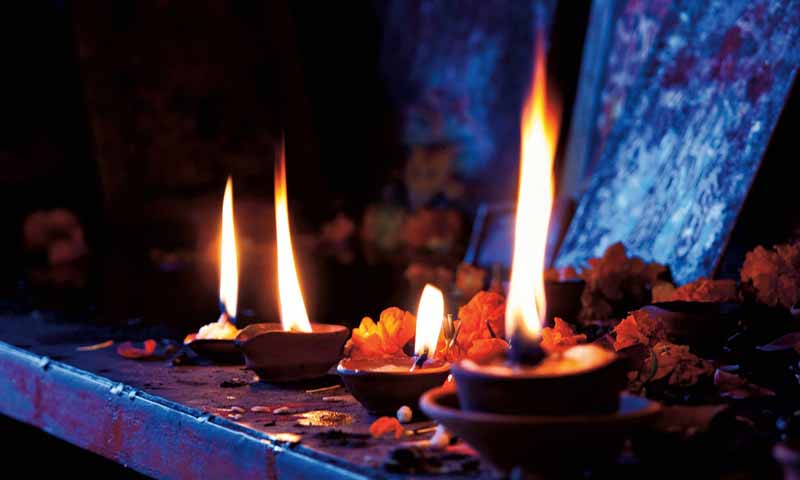
Indian Influences on Today’s Southeast Asia
March, 2018
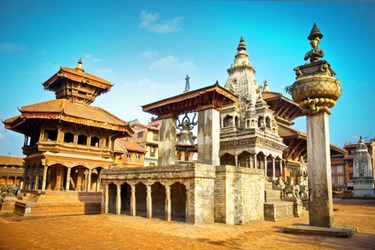
8 Reasons to Visit Nepal
November, 2016
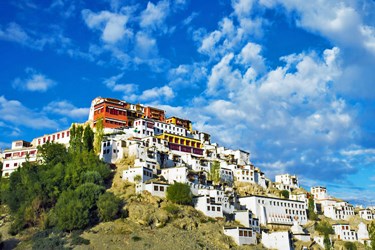
Top 5 Reasons to Visit Tibet
February, 2017
PRACTICAL TIPS
- Passport & Visa
- Holidays
- Airport Taxes
- Baggage
- Climate & Clothing
- Communications
- Currency
- Customs Regulations
- Electricity
- Food & Water
- Health Matters
- Tipping
- Transportation
- What to Pack
A valid passport and visa are required for US citizens. Travelers may obtain a visa before traveling from a Nepalese embassy or consulate. However, the preferred and most convenient way is to apply for your visa on arrival. You may purchase a one day visa of $5 per day; $25 for 15 days; $40 per month and $150 for 3 months upon arrival at the airport. Further information can be obtained from the Embassy of Nepal.
Tourists may stay for a total of not more than 150 aggregate days in any calendar year.
Prithvi Narayan Shah’s Birthday – Jan 10th or 11th
Basanta Panchami – January/ February
Shiva Raatri – February/ March
Democracy Day – Feb 18th or 19th
Nawa Barsa (Nepali New Year) Apr 13th or 14th
Chait Dasain – March/ April
Ram Nawami – March/ April
Buddha Jayanti – April/ May
King’s Birthday – Jul 6th or 7th
Janai Purnima – July/ August
Krishna Asthami – July/ August
Dasain (5–6 days) – September/ October
Tihaar (3 days) – October/ November
Constitution Day – Nov 8th or 9th
The departure tax for international passengers is included in the ticket price.
On Domestic flights, passengers are allowed 44 pounds of luggage per person. On International flights, passengers are allowed two pieces of checked luggage. Excess luggage fees will be charged if you check more than the stated allowances, and these charges are your responsibility. At most major airports, baggage carts are available for your luggage, usually for a small additional fee.
The seasons in Nepal can broadly be categorized into two- dry and wet with monsoon. There is dry season from October to May while wet season of the monsoons last from June to September. The coming up of dry season – from September till November – is the Autumn and is the best time of the year in Nepal. With the end of monsoon and the advent of Autumn, different kinds of celebrations start in Nepal. The countryside is green and lush during this period. Nepal celebrate their two popular festivals, Dashain and Tihar during this time. Summer months in Nepal are from April to September while winter months are from November to March. In the north summers are mild and winters harsh while quite the opposite in the south.
Lightweight cotton clothing is recommended from May through October. Warm clothes are needed for winter. An umbrella or raincoat is a necessary for the monsoons.
International Direct Dialing (IDD) service is provided at all hotels featured on our Nepal tours. SIM cards can be purchased at the airport and telecommunications stores in Kathmandu. You may also check with your mobile service provider if an international plan may be available.
Internet Access will be available at all hotels (except jungle lodges where connectivity may be limited) included in your Nepal vacation package, though fees may apply.
Mobile Apps such as WhatsApp, Skype and Facebook Messenger provide free/cheap and convenient ways to stay connected.
Postal Services: The Central Post Office located near Dharahara Tower, is open from 9 a.m. to 5 p.m. Monday through Friday. The counters are open from 7 a.m. to 4 p.m. and provide stamps, postcards and aerograms. Post office is available Monday through Friday from 9 a.m. to 5 p.m. Express Mail Service (EMS) is available at GPO and at Thamel, Basantapur and airport postal counters.
The unit of the Nepalese Currency is Rupee. One Nepali Rupee is made up of 100 paisa. Nepali Rupee notes come in Rs. 1, Rs. 2, Rs. 5, Rs. 10, Rs. 20, Rs. 25, Rs. 50, Rs. 100, Rs. 500, Rs. 1000. Coins come in 1, 2, 5, 10, 20, 25, 50, Rs. 1, Rs. 2, Rs. 5, and denominations. The exhange rate of US$1=95NPR (July 2013)
Foreign currencies must be exchanged only through banks or authorized foreign exchange dealers. The receipts from such transaction are to be obtained and retained. Visitors can exchange money at the foreign exchange counter at the airport upon arrival. Indian currency of Rs.500 and Rs.1,000 bills are not allowed to be brought into Nepal. They will not be exchanged and will not be accepted for transaction of any kind.
Credit cards like the American Express, Visa and Master Card are accepted. Convertible currencies are as follows: Dollar (U.S., Australian, Hong Kong, Canadian, Singapore); Euro(Swiss, French, Belgium, Netherlands, Germany, Italy); Pound (U.K.); Yen (Japan). Please retain your encashment for changing back local currency into foreign currency on departure at exit points or at Tribhuvan International Airport departure lounge.
Banks in Kathmandu Valley are open between 9:30 a.m. to 2:30 p.m. from Monday through Friday. They are closed on Saturdays, Sunday and other public holidays. In other places banks are open from 10 a.m. to 2:30 p.m. from Mondays through Thursdays and 10 a.m. to 2:30 p.m. on Fridays and are closed on Saturdays and government holidays. ATM machines are located in a few banks in the capital. Money can be transferred from other parts of the world from the numerous transfer agencies in the capital.
All baggage must be declared and cleared through customs on arrival at the entry. Personal effects are permitted free entry. Passengers arriving at Tribhuvan International Airport (TIA) without any dutiable goods can proceed through the Green Channel for quick clearance without a baggage check. If you are carrying dutiable articles, you have to pass through the Red Channel for detailed customs clearance.
Voltage in Nepal is 220 volts, though electrical converters are usually not needed for portable electronic devices such as phones, cameras, tablets, laptop computers, etc. However, electrical adapter that can change the shape of the plug prongs may be necessary.
Nearly all hotels (except in specialty lodging such as adventure lodges, etc.) featured in your Nepal tour package provide hair dryers and other amenities expected in an international standard 4 or 5-star hotel.
The number one rule is not to drink tap water or other water from open sources. Reputable brands of bottled water or soft drinks are available.
Stomach upsets are the most likely travel health problem but the majority of these cases are minor problems. Thoroughly cooked food is the safest but not if it has been left to cool. One should be careful about what one eats and drinks.
Do not drink unpasteurized milk. Boiled milk is fine if it is kept hygienically and yogurt is usually good. Tea or coffee should also be all right since the water would have been boiled. Salads and fruit should be washed with purified water or peeled where possible. Food, drink and snack from reputable sources are usually safe. However beware of food that has been kept out in the open for long.
Visitors do not need any particular immunization for visit except if arriving from an infected area . Vaccinations for cholera, meningitis, tetanus and diphtheria, typhoid and gamma globulin should, however, be considered. It may be a good idea to get a complete check-up before departure.
Medical facilities in Kathmandu Valley are sound. All kinds of medicines, including those imported from overseas are available in Kathmandu. Kathmandu Valley also offers the services of major general hospitals and private clinics. Health posts have been set up by the government in different parts of rural Nepal. However, facilities are not on par with those found in Kathmandu Valley.
A travel insurance policy that covers theft, loss and medical treatment is recommended. Make sure the insurance also covers the activities that you will be undertaking during your stay in Nepal such as trekking, rafting.
For additional precautionary measures and most up-to-date information, please visit the U.S. Centers for Disease Control website.
Tipping is a newly accepted custom in Nepal. Hotel, restaurant, touring and trekking organization staff members often make up for relatively meager wages with tips. But, it should only reward good work. Don’t tip for short taxi rides in town or any service person you’ve bargain with. Groups might give a reasonable amount per day to a tip pool to be divided among the staff, generally relative to rank, for good service.
For your transfers and sightseeing included in your Nepal tour package itinerary, we recommend tipping between $10-$12 per person per full day of service. This amount is to be split between the guide and driver at a 2:1 ration. You may, of course, adjust this amount up or down depending on the level of service you received.
All ground transportation, airport transfers and sightseeing, will be provided via private car and guide. If you wish to explore on your own, we recommend metered taxis that can be hailed off the streets and are easily recognizable by the taxi sign and their black number plates. Night taxis are available for higher prices. Three wheeler scooters that are cheaper than taxis are also available. For cheaper rides buses and teeny vans called micro buses are available to different parts of the Valley.
Valid Passport. Copies of Your Airline Tickets. Mosquitoes repellent. Your Medicines. Medications for diarrhea and other digestive system ailments. Departure documents.Camera(s) & portable electronic devices. Sunscreen. Pocket size Kleenex. Folding Umbrella. Comfortable walking shoes.
Time Zone
11 hours + ET
Climate
View Chart
International Gateway(s)
Paro (PBH)
BHUTAN VIRTUAL TOUR
BHUTAN GALLERY
DISCOVER MORE ON OUR BHUTAN TRAVEL BLOGS
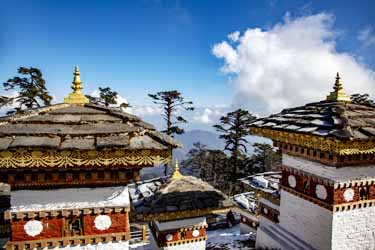
Bhutan – Customs, Traditions & Etiquette
March, 2019

Indian Influences on Today’s Southeast Asia
March, 2018
PRACTICAL TIPS
- Passport & Visa
- Holidays
- Airport Taxes
- Baggage
- Climate & Clothing
- Communications
- Currency
- Customs Regulations
- Electricity
- Food & Water
- Health Matters
- Tipping
- Transportation
- What to Pack
All visitors to Bhutan must have a visa approved prior to arriving in the kingdom. Those who have not had a visa approved will not be permitted to board their Druk Air flight to Bhutan. When booking one of our Bhutan vacation packages, your Bhutan visa is included and will be furnished as part of your final trip documents. Only a scanned copy of your passport is required to obtain your visa.
Winter Solstice – Jan 2nd
Traditional Day of Offerings – Jan 12th
LOSAR (NEW YEARS DAY) – Feb
Shabdrung Kuchoe – Apr 30th
Birth Anniversary of Third King HM Jigme Dorje Wangchuck- May 2nd
Birth Anniversary of Guru Rinpoche – late June
First Sermon of Lord Buddha – mid July
Blessed Rainy Day – the last Sat of September
Thimphu Drupchen* -mid September
Thimphu Tshechu* – late September
Dashain – mid October
Birth Anniversary of HM King Jigme Singgye Wangchuck – Nov 11 – 13
National Day – Dec 17th
*For Thimphu only
The departure tax for international passengers is included in the ticket price.
On Domestic flights, passengers are allowed 44 pounds and 68 pounds of luggage per person for economic and business class respectively. On International flights, passengers are allowed two pieces of checked luggage. Excess luggage fees will be charged if you check more than the stated allowances, and these charges are your responsibility. At most major airports, baggage carts are available for your luggage, usually for a small fee.
Bhutan’s climate ranges from tropical in the south, to temperate in the center of the country, to cold in the north…and like much of your adventure in the Himalayas it will be quite unpredictable. The weather can vary dramatically from place to place, from day to day or within the same day. In the Thimphu and Paro valleys, the winter daytime temperature averages 60 degrees Fahrenheit during clear winter days but drops well below freezing during the night. Mid December to early January can be a beautifully clear and dry time in Western Bhutan. Late December through mid February is the period of heaviest snow fall in the higher elevations.
The fluctuations are not quite so great during the summer and daytime temperature often rises to the mid-eighties Fahrenheit. Punakha and the central valleys are lower than their Western neighbors and tend to always be a few degrees warmer. The higher peaks will be snow-covered all year. The higher passes, particularly Thrumshing La, between Bumthang and Mongar, can be treacherous during the winter as snow falls frequently and ices up the road. Light snow will often dust Thimphu and Paro in winter, and occasionally there will be heavy snowstorms despite their location in the Central Himalayas.
The Summer monsoon from the Bay of Bengal affects Bhutan from late May to late September. Views over the Himalayas from the higher passes are usually obscured from June to August. There are notable advantages to visiting Bhutan during the wet season including the spectacular rhododendron blossom from March through May and the deep green valleys. Many species of wild orchids are in full bloom during late summer season (August).
The Spring season in Bhutan can only be compared to a master artist’s palette, truly a spectacular time. The autumn season, late September through November, is usually very mild and clear. The Fall colors surround and embrace your senses. The sky is usually at it’s clearest, affording magnificent views of the Himalaya range. The Spring and Fall seasons are traditionally the most popular times to visit the Kingdom.
Bhutan’s changeable climate means you have to bring an assortment of clothes, including rain gear. A layered wardrobe makes the most sense. Good walking shoes or hiking boots are essential even if you are not hiking. Because of the altitude, a hat or cap and a good pair of sunglasses are essential. Warm clothes are recommended for the evening. Because of the long distances between towns an villages bring the medicines you’ll need along with some first-aid supplies.
Telephones & fax facilities are available in major hotels but charges can be quite expensive. You can send or receive mail but it takes approximately 10 to 14 days to receive mail from anywhere in USA or Europe.
Most hotels in your Bhutan tour package have some basic internet/email service, although connectivity may be limited.
Bhutanese currency is the ngultrum (nu). The approximate exchange rate is 75.00 nu for one US dollar. The Ngultrum is on par with the Indian Rupee (both the Nu and Indian Rupee can be used in Bhutan). US Dollars and other world currencies can be exchanged at banks in the larger towns (hours 10:00 am to 1:00 pm, Mon to Fri) and at the larger hotels. In the capital town of Thimphu some of the smaller bank branches are open Saturday and Sunday for currency exchange. Rural towns and villages may accept only Ngultrum or rupees.
Credit cards are not accepted in almost all shops in Bhutan. There are money exchange counters at the airport, major hotels, and the banks. Some ATMs are available in larger tourist cities such as Thimpu and Paro.
The Bhutanese authorities strictly monitor the export of any religious antiquities or antiques of any kind from the Kingdom (100 years or older). Visitors are advised to be cautious in purchasing old and used items. Custom authorities will not allow items to be taken out of the country if they have not been officially certified as non-antique. Personal videos, cameras, personal computers, portable telephones or any other electronic device should be registered with the customs authorities on arrival at Paro and will be checked by the same on departure. Upon arrival you will be issued a “customs form” this form must be filled out, with declarations, and returned to authorities before leaving the kingdom. Import of plants, soils, etc., are subject to quarantine regulations. These items must be declared on arrival.
Voltage in Nepal is 220 volts, though electrical converters are usually not needed for portable electronic devices such as phones, cameras, tablets, laptop computers, etc. However, electrical adapter that can change the shape of the plug prongs may be necessary.
Tap water is NOT potable in Bhutan. Only drink purified bottled water. Bring water with you at all times, especially when trekking.
All meals (beverages are on your own expense) are included our Bhutan vacation packages. Unlike most countries in Asia, Bhutan is not known for its cuisine. As a Buddhist country, most local Bhutanese do not eat meat or fish so nearly all foods besides vegetables are imported from elsewhere. Outside of luxury hotel, Bhutanese food tend to be simple and not very plentiful – so it’s important for travelers to set the proper expectation when it comes to meals.
No inoculations or vaccinations are required unless coming from or passing through an infected area. Travelers should bring sufficient medication with them if required and should check for updated health recommendations before your departure to Bhutan regarding hepatitis, malaria, typhoid, etc. However, there is sufficient clinics and hospitals for medical services, indigenous medical facilities is available for all district capitals.
For additional precautionary measures and most up-to-date information, please visit the U.S. Centers for Disease Control website.
Tipping in restaurants is seldom practiced. For your transfers and sightseeing included in your Bhutan vacation itinerary, we recommend tipping between $12-$15 per person per full day of service. This amount is to be split between the guide and driver at a 2:1 ration. You may, of course, adjust this amount up or down depending on the level of service you received.
All ground transportation, airport transfers and sightseeing, will be provided via private car and guide as part of your Bhutan tour package. Taxis are available from major hotels and the use of mass public transportation is not recommended.
Mode of transportation within Bhutan is by motor vehicles only. There are no domestic airlines or trains. The main two lane highway runs from west to east connecting all the major towns and villages. The mountainous terrain and winding roads restrict the average speed of vehicles to less than 40 km/hr. During monsoon and winter months, weather can disrupt travel and unexpected changes might occur in itineraries. Every effort will be made to stay as close to original travel itinerary as possible. For visitors wishing to enter Bhutan by road, the only land entry point is through the southern boarder town of Phuentsholing, bordering West Bengal India. All visa and custom regulations apply.
Valid Passport. Copies of Your Airline Tickets. Mosquitoes repellent. Your Medicines. Medications for diarrhea and other digestive system ailments. Departure documents.Camera(s) & portable electronic devices. Sunscreen. Pocket size Kleenex. Folding Umbrella. Comfortable walking shoes.
ABOUT OUR PRIVATE INDIA, NEPAL & BHUTAN TOURS
For over 20 years, Explorient has been helping countless travelers realize their dream vacation to India and the Himalayas. We offer a collection of highly exclusive luxury India vacations, inspiring Nepal adventures & inspiring Bhutan tours spanning everything from introductory programs for first time travelers to invigorating trekking adventures to unforgettable cultural journeys. Our meticulously crafted private Nepal & Bhutan India tours are designed to showcase all facets of South Asia, featuring best-in-class hotels and the most attentive guides that ensure every minute of your trip is maximized to the fullest. And because our Bhutan, India & Nepal tours are always private, our itineraries are fully customizable to suit your travel style, tastes and interests so you can explore the wonders of the Himalayas – YOUR WAY!
From the rugged mountains of Nepal to the pristine white sandy beaches of Goa. Bhutan’s awe-inspiring monasteries to India’s magnificent palaces. Explorient brings you to the exotic lands of the Himalayas with memories that will last a lifetime.
All of our India, Nepal & Bhutan tours & vacation packages are Private, and guaranteed to operate with a minimum of two passengers at the prices shown. This simply translates into greater flexibility, better comfort and personalized service so you can experience the Himalayas the way you have always dreamt of it to be.

